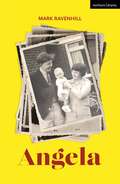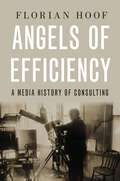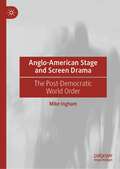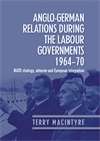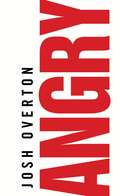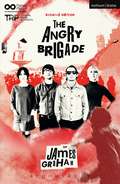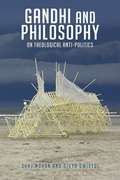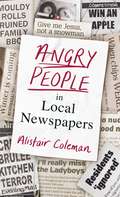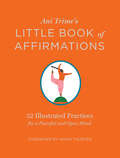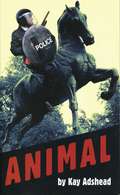- Table View
- List View
Angel of the North by Antony Gormley (UEB Contracted)
by RnibThis is an image of a steel sculpture of a standing man with wings, his head is top centre and feet bottom centre of the page. There is a locator dot shown, which will be at the top left when the image is the right way up. The man is facing forward. He has no facial features and his legs and feet are not separated. Instead of arms he has long aeroplane wings which stretch out to the left and right. The thin vertical lines are ridges of steel which are part of the sculptures structure. It is unpainted, the orange red colour comes from natural rust staining.
Angel of the North by Antony Gormley (UEB Uncontracted)
by RnibThis is an image of a steel sculpture of a standing man with wings, his head is top centre and feet bottom centre of the page. There is a locator dot shown, which will be at the top left when the image is the right way up. The man is facing forward. He has no facial features and his legs and feet are not separated. Instead of arms he has long aeroplane wings which stretch out to the left and right. The thin vertical lines are ridges of steel which are part of the sculptures structure. It is unpainted, the orange red colour comes from natural rust staining.
Angel Over Canterbury by Sara Wicks (tactile)
by Rnib2001; by Sara Wicks (born 1965); mixed media on handmade paper, mounted in a grey wood box frame; paper: 29 cm high by 41 cm wide, frame: 47 cm high by 58 cm wide. The painting was commissioned as a cover for the Canterbury Festival brochure in 2001. Sara says: I wanted to celebrate the unique history of the city and decided to do this by collaging together the iconic architectural landmarks, centring on the Cathedral. The angel is a reference to the spiritual importance of the city. My choice of bright colour was to reinforce the positivity of the image as well as being eye-catching for the Festivs purposes. I made the piece by painting the different component images on separate bits of paper and collaging them together: the painting surface has gained in thickness and texture where I have reworked areas. This brightly coloured painting shows the River Stour as a royal blue strip along the bottom edge of the painting with black lines and shapes in it to give an idea of the water. Above the river are three iconic views of Canterbury set on a dark green strip - on the left is Dane John mound, in the centre Canterbury Cathedral, and on the right the West Gate Towers. Dane John is shown as a green mound with black spiral pathway leading to the rounded top that is surmounted by a white tiered memorial. Originally a prehistoric burial mound, it was landscaped in the 18th century under the direction of Alderman Simmons whose memorial now stands on the top. Canterbury Cathedral shown from the north side with its central tower (Bell Harry Tower) and western front. The cathedral has been outlined in black infilled with shades of brown. The windows and western door are shown in black and an idea of the leaded roof shown as grey with light blue highlights. The West Gate Towers, Canterbury's only surviving medieval gate is shown from the front (from St Dunstan's), and consists of two round towers with a gateway between. This is again outlined in black and infilled with a stone colour. The slits on each tower are gun loops, the first in England. The main gateway, which was originally protected with a heavy wooden door, drawbridge and murder holes (through which boiling oil could be poured on attackers) is shown in black. Arching over the whole scene is an Angel, dressed in a long white robe with bare feet, blowing a golden trumpet set against a yellow sky. The Angel has long brown hair that flows out behind her. The trumpet, held in both hands, points up to an orange sun in the top right hand corner of the painting. The circular sun has clearly depicted thick rays radiating out from it. The yellow sky turns to orange along the painting's top edge to form a contrasting border to the blue river at the bottom. The painting is signed and dated SW 01 in the bottom right hand corner. The tactile image is approximately half the size of the actual painting. A broken thick line shows the edge of the frame. The river is shown by a texture with a thick line for the river bank. A thick line also outlines the angel with thinner lines for the hair and facial features. Thinner lines also define the outlines of the cathedral, West Gate Towers, outline of the mound. The dark green strip above the river is shown by a different texture that is also used for the orange sky. The yellow sky has no texture. A further texture shows the white robe of the angel, the roof of the cathedral and Dane John mound with hollows for the spiral path. Solid texture shows the sun, the trumpet, the windows and doors on the cathedral and West Gate Towers, and the memorial on top of Dane John mound.
Àngel Planells’ Art and the Surrealist Canon (Studies in Surrealism)
by Anna VivesHaving been mistakenly perceived as a follower of Salvador Dalí, Catalan surrealist painter and writer Àngel Planells (1901–1989) has passed through the history of art practically unnoticed. Yet his work suggests an influence on a number of works by Dalí, proving that a fairer way to define their relationship is as an artistic dialogue. His participation in the groundbreaking International Surrealist Exhibition in London in 1936 is in itself a marker of his quality as an artist, but Planells’ contribution to surrealism is remarkable for his use of astronomy, fantastic scenes redolent of Edgar Allan Poe’s narrative as well as ludic elements and meta-pictorial techniques that contest Fascism.
Àngel Planells’ Art and the Surrealist Canon (Studies in Surrealism)
by Anna VivesHaving been mistakenly perceived as a follower of Salvador Dalí, Catalan surrealist painter and writer Àngel Planells (1901–1989) has passed through the history of art practically unnoticed. Yet his work suggests an influence on a number of works by Dalí, proving that a fairer way to define their relationship is as an artistic dialogue. His participation in the groundbreaking International Surrealist Exhibition in London in 1936 is in itself a marker of his quality as an artist, but Planells’ contribution to surrealism is remarkable for his use of astronomy, fantastic scenes redolent of Edgar Allan Poe’s narrative as well as ludic elements and meta-pictorial techniques that contest Fascism.
Angela (Modern Plays)
by Mark RavenhillMark Ravenhill's autobiographical radio play explores the way culture, high and low, impacted both his mother's and his family's lives. Starting an adult ballet class as the only male in the group sparks a memory of life through the eyes of Ravenhill, the playwright. As time intertwines through alternating perspectives we see his family at different stages of their life. From childhood dreams of being a dancer and performer through to the creativity that brings his parents together for the first time and into their old age, this is a deeply personal and resonate drama about the intersects of life and culture. Commissioned by Sound Stage, a new immersive audio theatre, designed by theatre-makers and leading technologists, giving audiences a unique and engrossing online theatre experience of new plays from the best in British theatre.
Angela (Modern Plays)
by Mark RavenhillMark Ravenhill's autobiographical radio play explores the way culture, high and low, impacted both his mother's and his family's lives. Starting an adult ballet class as the only male in the group sparks a memory of life through the eyes of Ravenhill, the playwright. As time intertwines through alternating perspectives we see his family at different stages of their life. From childhood dreams of being a dancer and performer through to the creativity that brings his parents together for the first time and into their old age, this is a deeply personal and resonate drama about the intersects of life and culture. Commissioned by Sound Stage, a new immersive audio theatre, designed by theatre-makers and leading technologists, giving audiences a unique and engrossing online theatre experience of new plays from the best in British theatre.
Angelica's Book and the World of Reading in Late Renaissance Italy (Cultures of Early Modern Europe)
by Brendan Dooley Beat Kümin Brian CowanThrough the lens of a history of material culture mediated by an object, Angelica's Book and the World of Reading in Late Renaissance Italy investigates aspects of women's lives, culture, ideas and the history of the book in early modern Italy. Inside a badly damaged copy of Straparola's 16th-century work, Piacevoli Notti, acquired in a Florentine antique shop in 2010, an inscription is found, attributing ownership to a certain Angelica Baldachini. The discovery sets in motion a series of inquiries, deploying knowledge about calligraphy, orthography, linguistics, dialectology and the socio-psychology of writing, to reveal the person behind the name. Focusing as much on the possible owner as upon the thing owned, Angelica's Book examines the genesis of the Piacevoli Notti and its many editions, including the one in question. The intertwined stories of the book and its owner are set against the backdrop of a Renaissance world, still imperfectly understood, in which literature and reading were subject to regimes of control; and the new information throws aspects of this world into further relief, especially in regard to women's involvement with reading, books and knowledge. The inquiry yields unexpected insights concerning the logic of accidental discovery, the nature of evidence, and the mission of the humanities in a time of global crisis. Angelica's Book and the World of Reading in Late Renaissance Italy is a thought-provoking read for any scholar of early modern Europe and its culture.
Angelica's Book and the World of Reading in Late Renaissance Italy (Cultures of Early Modern Europe)
by Brendan Dooley Beat Kümin Brian CowanThrough the lens of a history of material culture mediated by an object, Angelica's Book and the World of Reading in Late Renaissance Italy investigates aspects of women's lives, culture, ideas and the history of the book in early modern Italy. Inside a badly damaged copy of Straparola's 16th-century work, Piacevoli Notti, acquired in a Florentine antique shop in 2010, an inscription is found, attributing ownership to a certain Angelica Baldachini. The discovery sets in motion a series of inquiries, deploying knowledge about calligraphy, orthography, linguistics, dialectology and the socio-psychology of writing, to reveal the person behind the name. Focusing as much on the possible owner as upon the thing owned, Angelica's Book examines the genesis of the Piacevoli Notti and its many editions, including the one in question. The intertwined stories of the book and its owner are set against the backdrop of a Renaissance world, still imperfectly understood, in which literature and reading were subject to regimes of control; and the new information throws aspects of this world into further relief, especially in regard to women's involvement with reading, books and knowledge. The inquiry yields unexpected insights concerning the logic of accidental discovery, the nature of evidence, and the mission of the humanities in a time of global crisis. Angelica's Book and the World of Reading in Late Renaissance Italy is a thought-provoking read for any scholar of early modern Europe and its culture.
Angels of Efficiency: A Media History of Consulting
by Florian HoofAngels of Efficiency traces the invention of film and the parallel rise of management consulting, telling the story of how these together brought about new forms of information visualization and visual management. The period from 1880 to 1930, author Florian Hoof argues, saw the genesis of a form of visual knowledge that provided a novel means to intervene in management processes. Visual management largely superseded oral and written forms of communication and decision-making, instituting a strategy for overcoming the mid-nineteenth-century crisis of control and resulting in a media-based form of rationality. Focusing largely on early corporate consulting in America by tracing the careers of Frank Gilbreth and his wife and business partner, Lillian Gilbreth, Hoof examines the rise and lasting effects of corporate consulting as a visual form. Framing consulting as a cultural technique that is characterized by media processes in which the boundaries of economic logic and legitimacy emerge, Angels of Efficiency forges a new approach to the history of consulting. In addition to pioneering a new field of film and media studies, Hoof contributes original research to American cultural and economic history, such as archival findings concerning Gilbreth's consulting efforts for the German Army during WWI. With this distinct and innovative interdisciplinary approach, Hoof has marshalled cinema and media studies, business history, and science and technology studies to make sense of the rise of consulting practices and their remarkable stability to this day.
Angels of Efficiency: A Media History of Consulting
by Florian HoofAngels of Efficiency traces the invention of film and the parallel rise of management consulting, telling the story of how these together brought about new forms of information visualization and visual management. The period from 1880 to 1930, author Florian Hoof argues, saw the genesis of a form of visual knowledge that provided a novel means to intervene in management processes. Visual management largely superseded oral and written forms of communication and decision-making, instituting a strategy for overcoming the mid-nineteenth-century crisis of control and resulting in a media-based form of rationality. Focusing largely on early corporate consulting in America by tracing the careers of Frank Gilbreth and his wife and business partner, Lillian Gilbreth, Hoof examines the rise and lasting effects of corporate consulting as a visual form. Framing consulting as a cultural technique that is characterized by media processes in which the boundaries of economic logic and legitimacy emerge, Angels of Efficiency forges a new approach to the history of consulting. In addition to pioneering a new field of film and media studies, Hoof contributes original research to American cultural and economic history, such as archival findings concerning Gilbreth's consulting efforts for the German Army during WWI. With this distinct and innovative interdisciplinary approach, Hoof has marshalled cinema and media studies, business history, and science and technology studies to make sense of the rise of consulting practices and their remarkable stability to this day.
Angewandte Ethik und Film
by Thomas Bohrmann Matthias Reichelt Werner VeithDer Film ist eine ethische Erzählung. In diesem Sinne beteiligt er sich am gesellschaftlichen Diskurs über gutes oder schlechtes, richtiges oder falsches Handeln und thematisiert Moral und Unmoral innerhalb der Gesellschaft. Der Sammelband stellt eine Methode der ethischen Filmanalyse vor, die anhand ausgewählter Beispiele konkretisiert wird. Auf diese Weise analysieren namhafte Autorinnen und Autoren der philosophischen und theologischen Ethik Filme und arbeiten deren moralische Fragen heraus. Damit werden die Inhalte zentraler Bereichsethiken der Angewandten Ethik zur Sprache gebracht.
Angewandte Filmtheorie (Film, Fernsehen, Neue Medien)
by Oksana Bulgakowa Roman MauerWelche Filmtheorie ist hilfreich, um eine Erkenntnisfrage zu klären? Wie wirkt sich die theoretische Perspektive auf die Filmanalyse aus? Diese Fragen bestimmen grundlegend jede Untersuchung. Um den besonderen Fokus einer Theorie offenzulegen, stellt dieses Lehrbuch einen Spielfilm ins Zentrum: Blow Up (GB, I, USA 1966) von Michelangelo Antonioni. Blow Up wird wechselweise beleuchtet aus dem Blickwinkel der Narratologie, Bildtheorie und Musiktheorie, der Stil- und Genretheorie, des Neoformalismus und der quantitativen Filmanalyse, der Psychoanalyse und Gender Studies, der Realismustheorie und des Poststrukturalismus, der Intermedialitätstheorie und der Medienkulturtheorie. Welche Konturen des Films treten im Schlaglicht einer Theorie hervor, welche werden durch sie verborgen? Wie können sich zwei Modelle ergänzen? Wo schließen sie einander aus? Die Beiträge führen in die zentralen Positionen und Kategorien jeder Theorie ein und wenden die Modelle unmittelbar auf den Film an. Um die Besonderheiten der Perspektiven herauszustellen, reflektieren die Autor*innen jeweils abschließend die Analogien, Differenzen und Synergien sowie die Vor- und Nachteile komplementärer Theorien.
Anglo-American Stage and Screen Drama: The Post-Democratic World Order
by Mike InghamAnglo-American Stage and Screen Drama analyses and discusses the contemporary role of stage and screen drama as a critical forum for progressive thinking in an increasingly polarised geopolitical world. The book addresses the cultural politics of socially engaged 21st century stage plays and films, and makes the case for drama as a sociopolitical forum, in which the complex and contentious issues that confront society can be explored and debated. It conceives of Anglophone political drama as a significant intervention in today’s culture wars, representing the latter as a convenient distraction from the ongoing depredations of neoliberalism. In the main part of the book selected case-study plays and films from each of the first two decades illustrate drama’s capacity to influence critical debate on social justice issues. All of the case-study texts under discussion express a powerful aesthetics of resistance to right-wing ideology, and promote inclusive and enlightened values. This broader orientation underlines drama’s role as a channel for critical agency in today’s putative post-socialist, post-democratic climate.
Anglo–German relations during the Labour governments 1964–70: NATO strategy, détente and European integration (PDF)
by Terry MacintyreSpeaking at West Point in 1962, Dean Acheson observed that Britain had lost an empire and had still to find a new role. This book explains why, in the following years, as Britain’s Labour government contemplated withdrawal from east of Suez, ministers came to see that Britain’s future role would be as a force within Europe. To this end, and in order to gain entry into the European Economic Community, a close relationship with the Federal Republic of Germany would be essential. This account of Anglo-German relations during the 1960s reveals fascinating insights into how both governments reacted to a series of complex issues and why, despite differences which might have led to strains, a good understanding was maintained. Terry Macintyre’s innovative approach brings together material covering NATO strategy, détente and European integration, making the volume fascinating and essential reading for students and enthusiasts of contemporary British and German political history. This book makes an important contribution to what we know about Cold War history, and should help to redefine some of the views about the relationship between Britain and Germany during the 1960s.
Anglo–German relations during the Labour governments 1964–70: NATO strategy, détente and European integration
by Terry MacintyreSpeaking at West Point in 1962, Dean Acheson observed that Britain had lost an empire and had still to find a new role. This book explains why, in the following years, as Britain’s Labour government contemplated withdrawal from east of Suez, ministers came to see that Britain’s future role would be as a force within Europe. To this end, and in order to gain entry into the European Economic Community, a close relationship with the Federal Republic of Germany would be essential. This account of Anglo-German relations during the 1960s reveals fascinating insights into how both governments reacted to a series of complex issues and why, despite differences which might have led to strains, a good understanding was maintained. Terry Macintyre’s innovative approach brings together material covering NATO strategy, détente and European integration, making the volume fascinating and essential reading for students and enthusiasts of contemporary British and German political history. This book makes an important contribution to what we know about Cold War history, and should help to redefine some of the views about the relationship between Britain and Germany during the 1960s.
Angry (Oberon Modern Plays)
by Josh Overton'I’ll tell you what gets me riled up, what gets me dark and dirty, what Speaks to the Spiders living in my Soul and makeS me loSe my Shit' Are you Angry? We are, so we wrote a play and stole a bass guitar which I’m sure we’ll fit in somewhere. Written partially in verse; partially in rap but mostly in swear words ANGRY is not quite like anything you’ve ever seen but quite similar to a lot of different things you may have seen. Join us as we get loud, we get violent, we get furious beyond the government-approved safety level. We will shout at you, we will swear at you, we will spill our rage at the world upon you... but we expect nothing less than the same in return. Winner of The Sunday Times Playwriting Award 2015, ANGRY is the rallying cry of a generation with nothing left to say; part gig, part drinking game and not for the faint of heart. ANGRY has courted controversy across the country with its poetry-cum swearword script and its punk-funk music stylings. Come watch a bunch of twenty somethings in their pants, punch drums and each other to the rhythms of their inner children crying. Described as 'The most important thing I've seen at NSDF, in any year' in Noises Off magazine, ANGRY promises to be a night worth remembering.
Angry Alan & F*cked: Two Plays (Oberon Modern Plays)
by Penelope Skinner'Looking out over the country, this country, where I was born and raised, I wonder what's going to become of us. Because this can't be the future, can it? Everyone just... changing the rules?'Roger thinks the world's gone mad. He hates his job, his ex-wife torments him and to top it all, his girlfriend just discovered feminism. Roger's about to lose his shit. Until he discovers Angry Alan: online activist and "voice of reason"...A darkly comic new play about masculinity in crisis from award-winning Penelope Skinner.Includes Skinner's breakout play Fucked.
The Angry Brigade (Modern Plays)
by James GrahamIts government has declared a vicious class war. A one-sided war . . . We have started to fight back . . . with bombs.Against a backdrop of Tory cuts, high unemployment and the deregulated economy of 1970s Britain, a young urban guerrilla group mobilises: The Angry Brigade. Their targets: MPs, embassies, police, pageant queens. A world of order is shattered by anarchy and the rules have changed. An uprising has begun. No one is exempt.As a special police squad hunt the home-grown terrorists whose identities shocked the nation, James Graham's heart-stopping thriller lures us into a frenzied world that looks much like our own.The Angry Brigade was first produced by Paines Plough in September 2014 and this edition, featuring changes to the script, has been published to coincide with the production's transfer to the Bush Theatre, London, in May 2015.
The Angry Brigade: This House; The Angry Brigade; The Vote; Monster Raving Loony (Modern Plays)
by James GrahamIts government has declared a vicious class war. A one-sided war . . . We have started to fight back . . . with bombs.Against a backdrop of Tory cuts, high unemployment and the deregulated economy of 1970s Britain, a young urban guerrilla group mobilises: The Angry Brigade. Their targets: MPs, embassies, police, pageant queens. A world of order is shattered by anarchy and the rules have changed. An uprising has begun. No one is exempt.As a special police squad hunt the home-grown terrorists whose identities shocked the nation, James Graham's heart-stopping thriller lures us into a frenzied world that looks much like our own.The Angry Brigade was first produced by Paines Plough in September 2014 and this edition, featuring changes to the script, has been published to coincide with the production's transfer to the Bush Theatre, London, in May 2015.
The Angry Buzz: This Week and Current Affairs Television
by Patricia HollandCurrent affairs television in the UK, in more than half a century of programmes, has set out to tell ussomething we didn't know, treating its audience as citizens with the right to demand that 'something must bedone'. Over their 36 year history, the current affairs series This Week and its replacement TVEye, helped tomark out that democratic project. This is the story of This Week, one of the few giants of the genre, set withinthe wider pattern of 'the angry buzz' of inquiry and dissent that is current affairs television. This is a particularlytimely tale, now that many fear that current affairs may be an endangered species.Patricia Holland follows This Week from its beginnings in the 1950s as a light magazine programme withsome serious moments, through the challenging programmes of the 1970s – which brought home the realityof poverty at home, famine in Africa and accusations of torture in Northern Ireland. The story continues rightup to its demise in 1992, often blamed on its controversial programme 'Death on the Rock' on the shootingof IRA terrorists in Gibraltar. She shows how This Week covered the spectrum of public affairs and socialissues in an uncompromising way, which regularly brought it into conflict with the authorities. She also bringsto life people with a real sense of purpose and commitment and the realities of digging behind the headlinesagainst a highly charged international political backdrop.The Angry Buzz also explores the development of current affairs journalism. It looks at the scope of thecurrent affairs agenda; the practice of responsible journalism while producing attractive programmes;regulation and public service television; 'tabloidisation' and dumbing down; and issues for women workingwithin a genre largely dominated by men.This history of This Week and current affairs journalism is a live history, which does not remain in the past,but has a real purchase on the present – and the future.
Angry People in Local Newspapers
by Alistair ColemanThe news can be overwhelming, with reports on post-Brexit food shortages, the underfunded NHS, and international trade wars, but local news is filled with many other serious matters.___________Naked gardener puts neighbour off sausagesSports coach irate because KFC staff 'didn't cook him chicken'Fury after Morrisons wouldn't sell couple meat pies before 9amHouse fire started by squirrel disrupts funeralPeople across the UK are suffering the horrors of naked neighbours, large potholes, and parking fines. Packed with the best that regional journalism can offer, there are chapters on antisocial behaviour, transport hell and fast-food nightmares. Local issues may not be worthy of national headlines, but they certainly make people very, very angry...
Angsterleben im Horrorfilm: Wege zur softwarebasierten Analyse und Interpretation von Spannungsinhalten
by Julian SittelDie multimodale Studie zum Spannungs- respektive Angsterleben im Horrorfilm ist Teil eines von der Deutschen Forschungsgemeinschaft geförderten Kooperationsprojektes zwischen Filmwissenschaft (Universität Mainz) und Informatik (Universität Hannover), das dem Ausbau der digitalen Infrastruktur dient. Dies erfolgt über die Entwicklung einer Softwareplattform, die es Forscherinnen und Forschern ermöglicht, automatisiert und manuell Daten aus audiovisuellem Material zu gewinnen. In diesem ersten exemplarischen Forschungsprojekt wurden zur Untersuchung eines 20 Filme umfassenden Slasher-Film-Korpus, einem Sub Genre des Horrorfilms, einerseits das System zur manuellen Annotation sowie andererseits die grundlegenden algorithmischen Verfahren zur Erhebung von Einstellungslängen, Kameragrößen, den Helligkeits- und Laustärkewerten und zur Erkennung von Gesichtern in das System implementiert. Kann das Auslösen einer Angstreaktion als funktionaler Kern beim Spannungserleben eines Horrorfilms betrachtet werden, ermittelt die Arbeit, unter der Verwendung explorativ-statistischer Verfahren, Regelmäßigkeiten im Aufbau von diesbezüglich relevanten Inhalten. Die Untersuchung zeigt letztlich, dass Slasher-Filme durch ihre Inszenierung Eigenschaften von Gefahrensituationen simulieren, auf die das Publikum von Natur aus sensibilisiert ist.
Ani Trime's Little Book of Affirmations: 52 Illustrated Practices for a Peaceful and Open Mind
by Ani TrimeThis beautiful little volume combines 52 accessible and open-hearted affirmations from the beloved Tibetan Buddhist teacher Ani Trime with illustrated interpretations from a wide range of popular contemporary artists.
Animal (Oberon Modern Plays Ser.)
by Kay AdsheadAt the heart of a London Park there is a beautiful house. Inside, the raging Pongo has volunteered for an anger management drug trial. But isn’t anger vital to our humanity?Set in a mythical England against ongoing war and civil insurrection, Animal is a dark and funny tale of humanity’s struggle for progress. In this millennium, will we choose to be Animals or Angels? Animal opened at The Soho Theatre and New Writing Centre, London, on 4th September 2003 before embarking on a National tour.


